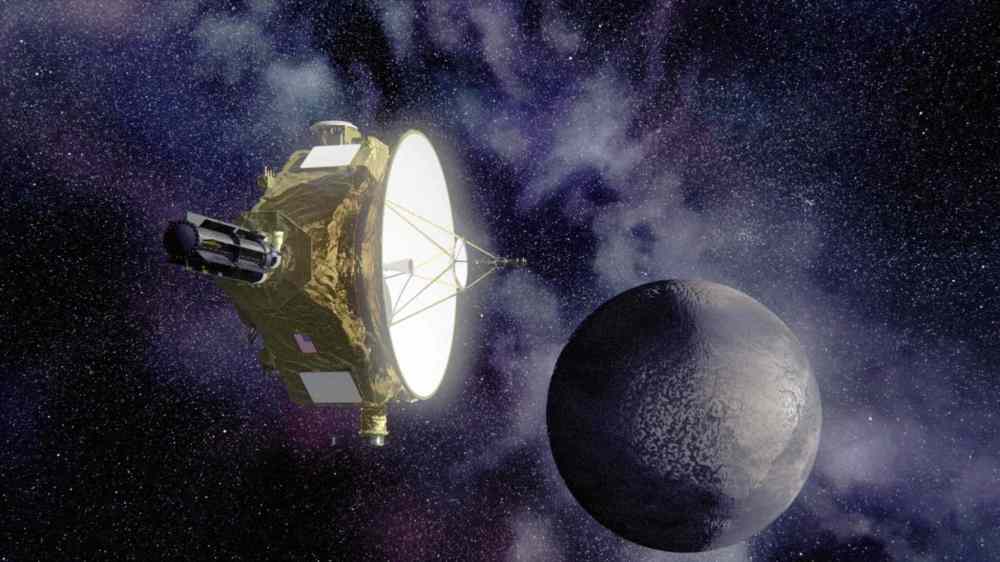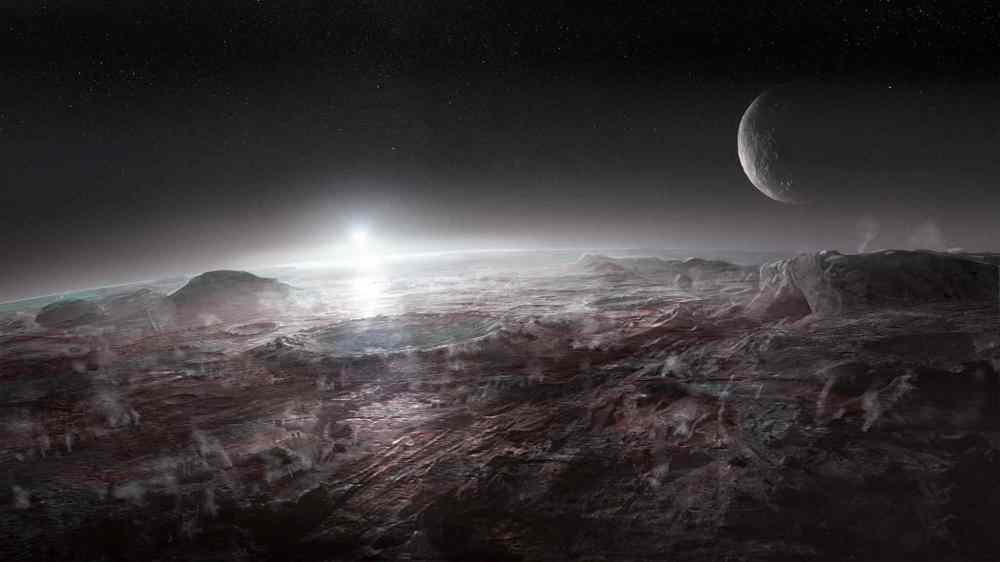Say hello to Pluto, earthlings
Discovery host fired up about NASA spacecraft's up-close contact with mysterious former planet
Advertisement
Read this article for free:
or
Already have an account? Log in here »
To continue reading, please subscribe:
Monthly Digital Subscription
$0 for the first 4 weeks*
- Enjoy unlimited reading on winnipegfreepress.com
- Read the E-Edition, our digital replica newspaper
- Access News Break, our award-winning app
- Play interactive puzzles
*No charge for 4 weeks then price increases to the regular rate of $19.00 plus GST every four weeks. Offer available to new and qualified returning subscribers only. Cancel any time.
Monthly Digital Subscription
$4.75/week*
- Enjoy unlimited reading on winnipegfreepress.com
- Read the E-Edition, our digital replica newspaper
- Access News Break, our award-winning app
- Play interactive puzzles
*Billed as $19 plus GST every four weeks. Cancel any time.
To continue reading, please subscribe:
Add Free Press access to your Brandon Sun subscription for only an additional
$1 for the first 4 weeks*
*Your next subscription payment will increase by $1.00 and you will be charged $16.99 plus GST for four weeks. After four weeks, your payment will increase to $23.99 plus GST every four weeks.
Read unlimited articles for free today:
or
Already have an account? Log in here »
Hey there, time traveller!
This article was published 14/07/2015 (3779 days ago), so information in it may no longer be current.
Dan Riskin is excited. Very excited.
And he thinks you should be, too.
Riskin, co-host of Discovery’s flagship science-news magazine series, Daily Planet, has been in Maryland this week, at Mission Central for NASA’s Pluto-bound New Horizons project, waiting anxiously alongside hundreds of other scientists for the first images and data to arrive from the piano-sized spacecraft’s up-close fly-by of the mysterious and ever-controversial former ninth planet.

The scientific community has been abuzz for weeks, as New Horizons neared the end of its nine-year journey and, early today, achieved humankind’s closest-ever approach to Pluto. On Wednesday at 6 p.m., Riskin will host the Discovery special Pluto: First Encounter, offering viewers a look at some of the images transmitted back from New Horizons during its high-speed encounter with the icy dwarf planet.
“The nice thing about this Pluto mission is that you don’t have to be a scientist who’s been looking at this stuff for years and years in order to get it,” Riskin told the Free Press Monday in a telephone interview from Maryland. “It’s Pluto; it’s the ninth planet that we all grew up with — never mind that it’s been demoted in recent years, and there’s a big controversy around that — and people care about Pluto, and they have opinions about it.
“It’s the smallest planet, it’s the farthest out there, and it’s in a weird orbit… in a region of our solar system that is totally unexplored, called the Kuiper Belt, which is almost like a second asteroid belt that’s out at the edge of the solar system, and Pluto is the largest known object that is part of it.”
Riskin explained that Pluto’s demotion from its status as a full planet to that of a lesser “dwarf planet” came after astronomers studying the Kuiper Belt located another similar-sized body and realized that Pluto’s standing as a planet needed to be reassessed.
“They basically said, ‘Whoa, we’re going to start finding tons of these things, and we can either call all the rocks in this asteroid-y belt planets — which would mean we’d have tens of thousands of planets — or we can admit that the eight planets we have are different and special and what we find out in the Kuiper Belt are not planets,” he said.
“Scientists argued about this for a while, and then a committee of scientists voted on it and decided to say that Pluto is something new called a dwarf planet, and there are others like it.”
The diminished status in no way detracts from the significance of this week’s fly-by, however, because the information being sent back to Earth by New Horizons could have a profound effect on our understanding of the universe and our place in it.

“We don’t even know what (Pluto) really looks like,” said Riskin. “We’re about to find that out. We’re about to find out what colour it is, which is a basic question that a kid can understand — ‘Which crayon am I going to use to colour this in?’ — and now we’re going to have great answers.
“It’s exciting on that basic level, and for scientists, this is about the origins of the solar system. The Kuiper Belt is a bunch of debris that is frozen in time; the solar system has changed, as have the planets and the sun, over the past 4.6 billion years, but out in the Kuiper Belt, things have been frozen and haven’t really changed at all. So if you go out there and see what Pluto’s like, you get a window back in time to our earliest solar system, and ultimately you get a look back in time at where we come from as a species.”
New Horizons’ contact with Pluto will be brief, but the information its fly-by will produce should have a profound influence on scientists’ understanding of the former planet.
“It’s not just flying by and providing data in real time,” said Riskin. “There are seven instruments, all working together to take pictures and all kinds of other measurements… in a very narrow four-hour window of time, and it’s going to collect so much data that it’s going to take more than 16 months to send it all back to Earth.
“In fact, it can’t even start sending the data until the fly-by is completed, because it’ll be doing all these flips and it can’t point its antenna back at Earth.
“(Tuesday) is going to be a quiet day, with a lot of people standing around waiting; we’re not going to start seeing images until (Tuesday) night, which is why Discovery is doing this special on Wednesday, so people will be able to see those images and get the full story.”
It’s an immensely complicated endeavour, but Riskin believes its most significant impact might take place on a basic level.

“It’s as simple as taking a picture, and that makes this mission accessible to kids,” he said. “And it has the potential to inspire, in the same way the Apollo missions (to the moon) did, in the same way the Curiosity (Mars) Rover did, and the same way the Rosetta Mission to a comet did. This is exciting.
“My big hope is that some 15 years from now, I’ll meet an engineer who’s working on who knows what, and they’ll tell me, ‘It was that fly-by of Pluto that made me decide to be a scientist.’ That’s really what great exploration does — it inspires people to go into this kind of career, and I think this mission has the potential to turn a lot of people into scientists. I believe that will be its greatest legacy.”
brad.oswald@freepress.mb.ca Twitter: @BradOswald

Our newsroom depends on a growing audience of readers to power our journalism. If you are not a paid reader, please consider becoming a subscriber.
Our newsroom depends on its audience of readers to power our journalism. Thank you for your support.
History
Updated on Tuesday, July 14, 2015 7:52 AM CDT: Replaces photo, changes headline



